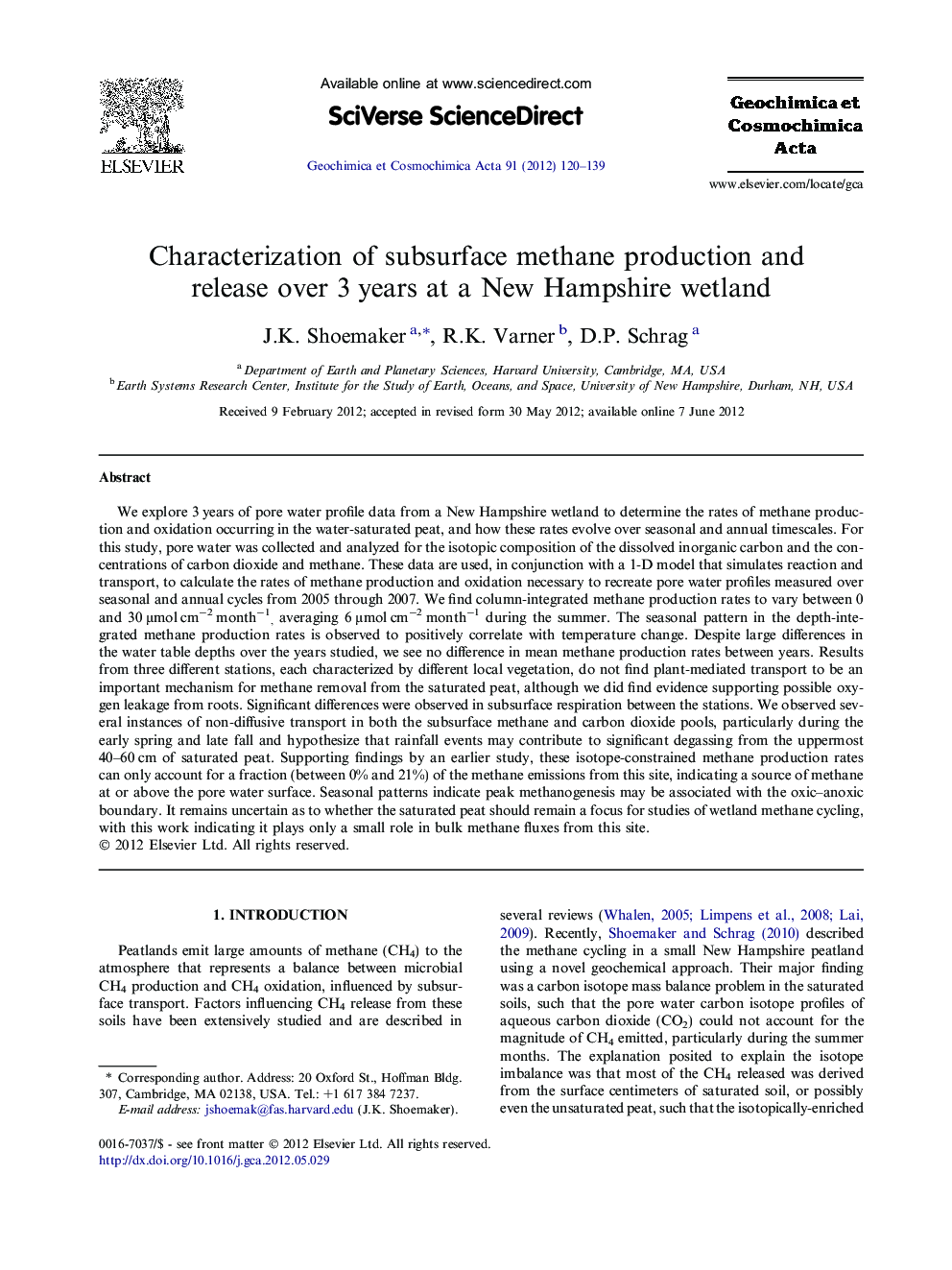| Article ID | Journal | Published Year | Pages | File Type |
|---|---|---|---|---|
| 4702702 | Geochimica et Cosmochimica Acta | 2012 | 20 Pages |
Abstract
We explore 3 years of pore water profile data from a New Hampshire wetland to determine the rates of methane production and oxidation occurring in the water-saturated peat, and how these rates evolve over seasonal and annual timescales. For this study, pore water was collected and analyzed for the isotopic composition of the dissolved inorganic carbon and the concentrations of carbon dioxide and methane. These data are used, in conjunction with a 1-D model that simulates reaction and transport, to calculate the rates of methane production and oxidation necessary to recreate pore water profiles measured over seasonal and annual cycles from 2005 through 2007. We find column-integrated methane production rates to vary between 0 and 30 μmol cmâ2 monthâ1, averaging 6 μmol cmâ2 monthâ1 during the summer. The seasonal pattern in the depth-integrated methane production rates is observed to positively correlate with temperature change. Despite large differences in the water table depths over the years studied, we see no difference in mean methane production rates between years. Results from three different stations, each characterized by different local vegetation, do not find plant-mediated transport to be an important mechanism for methane removal from the saturated peat, although we did find evidence supporting possible oxygen leakage from roots. Significant differences were observed in subsurface respiration between the stations. We observed several instances of non-diffusive transport in both the subsurface methane and carbon dioxide pools, particularly during the early spring and late fall and hypothesize that rainfall events may contribute to significant degassing from the uppermost 40-60 cm of saturated peat. Supporting findings by an earlier study, these isotope-constrained methane production rates can only account for a fraction (between 0% and 21%) of the methane emissions from this site, indicating a source of methane at or above the pore water surface. Seasonal patterns indicate peak methanogenesis may be associated with the oxic-anoxic boundary. It remains uncertain as to whether the saturated peat should remain a focus for studies of wetland methane cycling, with this work indicating it plays only a small role in bulk methane fluxes from this site.
Related Topics
Physical Sciences and Engineering
Earth and Planetary Sciences
Geochemistry and Petrology
Authors
J.K. Shoemaker, R.K. Varner, D.P. Schrag,
